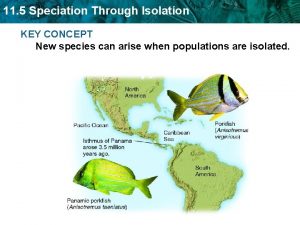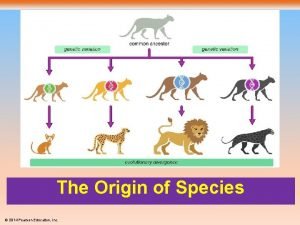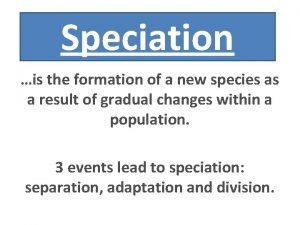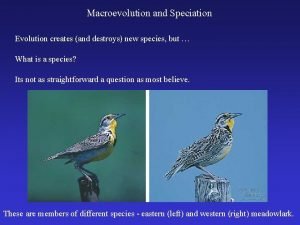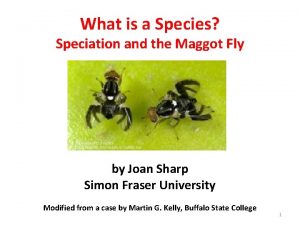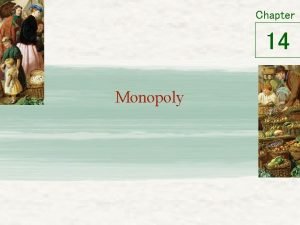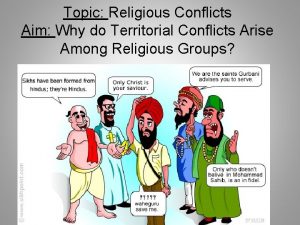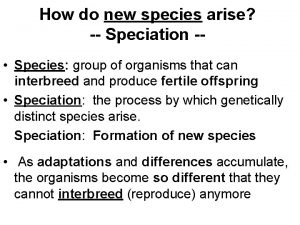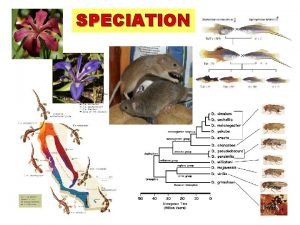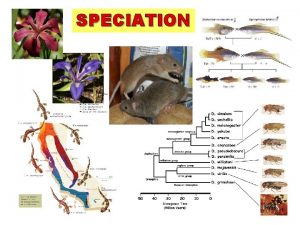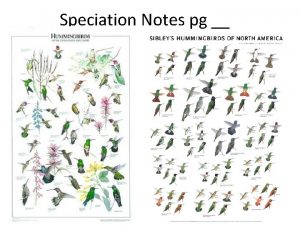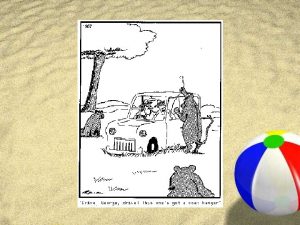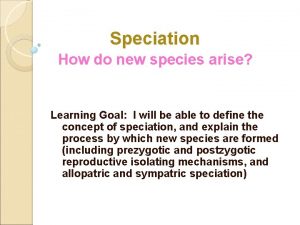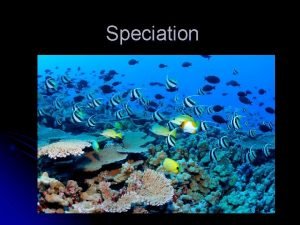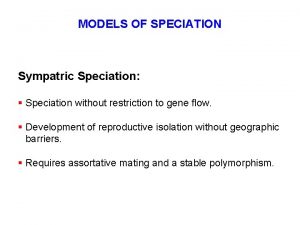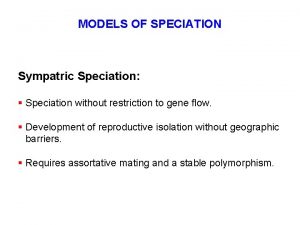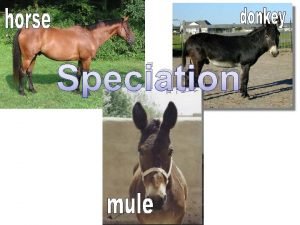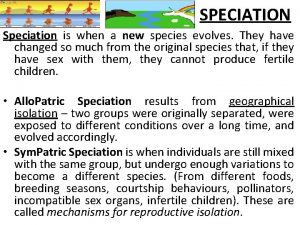Speciation Through Isolation New species can arise when














- Slides: 14

Speciation Through Isolation New species can arise when populations are isolated.

ØThe isolation of populations can lead to speciation. • Populations become isolated when there is no gene flow. – Isolated populations adapt to their own unique environments. – Genetic differences can add up over generations.

• Reproductive isolation can occur between isolated populations. – members of different populations cannot mate successfully – final step to becoming separate species • Speciation is the rise of two or more species from one existing species.

ØPopulations can become isolated in several ways. • Behavioral barriers can cause isolation. – called behavioral isolation – includes differences in courtship or mating behaviors

• Geographic barriers can cause isolation. – called geographic isolation – physical barriers divide population • Temporal barriers can cause isolation. – called temporal isolation – timing of reproductive periods prevents mating

Patterns of Evolution

ØEvolution through natural selection is not random. • Natural selection can have direction. • The effects of natural selection add up over time.

• Convergent evolution describes evolution toward similar traits in unrelated species.

• Divergent evolution describes evolution toward different traits in closely related species. kit fox red fox ancestor How do convergent and divergent evolution illustrate the directional nature of natural selection?

ØSpecies can shape each other over time. • Two or more species can evolve together through coevolution. – evolutionary paths become connected – species evolve in response to changes in each other

• Coevolution can occur in beneficial relationships.

• Coevolution can occur in competitive relationships, sometimes called evolutionary.

ØSpecies can become extinct. • Extinction is the elimination of a species from Earth. • Background extinctions occur continuously at a very low rate. – occur at roughly the same rate as speciation – usually affects a few species in a small area – caused by local changes in environment

• Mass extinctions are rare but much more intense. – destroy many species at global level – thought to be caused by catastrophic events – at least five mass extinctions in last 600 million years
 Section 5 speciation through isolation
Section 5 speciation through isolation Describe the conditions under which new species may arise.
Describe the conditions under which new species may arise. Speciation, or the formation of new species, is
Speciation, or the formation of new species, is Isolating mechanism
Isolating mechanism Speciation can only be observed over millions of years
Speciation can only be observed over millions of years Keystone species plants
Keystone species plants Isolation focal point
Isolation focal point Through you blind eyes are open
Through you blind eyes are open The call to arise and shine
The call to arise and shine How did the ottoman safavid and mughal empires arise
How did the ottoman safavid and mughal empires arise Price is greater than marginal cost in monopoly
Price is greater than marginal cost in monopoly Drunk en pasado simple
Drunk en pasado simple Why do territorial conflicts arise among religious groups
Why do territorial conflicts arise among religious groups Why might fishing disputes arise in the region?
Why might fishing disputes arise in the region? Oh church arise
Oh church arise
